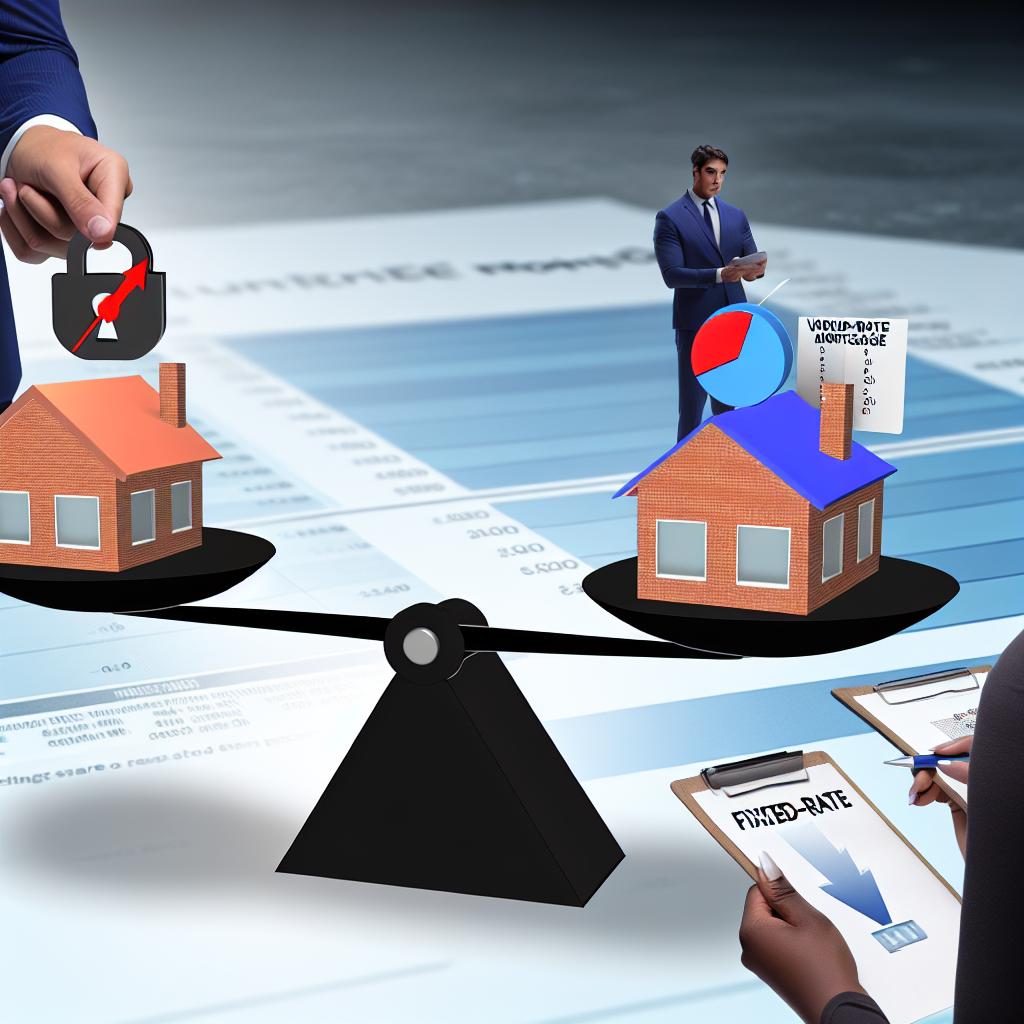
In a fixed-rate mortgage, the interest rate remains the same throughout the duration of the loan term. This means your monthly payments will remain consistent, providing a sense of financial stability and predictability. These loans are typically available in various terms, such as 15, 20, or 30 years.
One significant advantage of a fixed-rate mortgage is predictability. Since the interest rate doesn’t change, borrowers can plan their finances more effectively without worrying about potential increases in monthly payments. This characteristic is particularly appealing in times of fluctuating market interest rates. When you opt for a fixed-rate mortgage, you essentially lock in your interest rate, which ensures that your financial planning for the future doesn’t face unforeseen disruptions due to changes in interest rates.
Another notable benefit is the simplicity fixed-rate mortgages offer. Since your monthly payment amount is predetermined at the start, there’s no need to keep tabs on interest rate movements. This consistency can lead to greater peace of mind and can assist in better long-term budgeting because you know exactly how much you need to allocate toward mortgage payments every month.
The main drawback is that initial interest rates are generally higher than variable-rate options. Borrowers might end up paying more over the initial term, especially if interest rates decrease during that period. While this predictability is a significant draw for many, it is an aspect that might not benefit everyone, particularly in environments where interest rates are on a decline.
During the initial period of the loan, when comparing fixed-rate loans to adjustable ones, paying a higher interest could lead to overall higher costs than necessary. For individuals who plan to sell their home or refinance in a few years, the initial higher rates can lead to greater expenses without the benefit of the long-term interest rate stability.
A variable-rate mortgage (also known as an adjustable-rate mortgage or ARM) has an interest rate that can change over time, typically based on a benchmark rate or index. After an initial fixed-rate period, the rate adjusts at predetermined intervals.
The primary advantage is that they often come with lower initial interest rates compared to fixed-rate mortgages. This can translate into lower initial monthly payments. If interest rates decline, borrowers may benefit from lower payments moving forward. For individuals looking to minimize their monthly expenses initially, a variable-rate mortgage can provide the financial relief they seek during the early stages of repayment.
An ARM might prove beneficial if a borrower anticipates a rise in their income or plans to pay off the loan within a shorter time frame. The lower initial cost can enable savings or investments in other areas, optimizing financial growth outside mortgage obligations.
The main risk is the potential for rising interest rates, which can lead to higher monthly payments. This can make financial planning more challenging, as future payment amounts are uncertain. In times of economic instability, the variability introduces a degree of uncertainty that can stress budgeting and financial security.
The fluctuations can complicate the ability to maintain a constant trajectory in financial planning. The payments could potentially become burdensome if the variable rates skew significantly higher than the initial data indicated, leading to potential financial strain.
When choosing between a fixed-rate and a variable-rate mortgage, several factors should be considered:
Depending on how long you plan to stay in your home, one option may be more favorable. Fixed-rate mortgages are beneficial for long-term stability, while variable rates might appeal to those who plan to move or refinance within a few years. Considerations on the duration you intend to stay dictate the alignment of mortgage type to life plans. The balance of future plans with current financial capacity plays a critical role in this decision.
Current and anticipated trends in the economy and interest rates should be evaluated. In environments where interest rates are expected to rise, fixed-rate options can offer protection against cost increases. Substantial analysis of market preconditions can guide more informed decisions. Interest rate trends are a pivotal part of calculating the cost-benefit implications of this choice.
Assess your financial flexibility and your ability to withstand potential increases in monthly payments. Those with limited budgets might prefer the stability of a fixed rate. Considerations of financial elasticity and risk tolerance should steer the mortgage decision. Analyzing financial climates along with personal income projections forms a foundation for deciding between stability and flexibility.
For further understanding of how mortgages work and to explore different mortgage options, you might visit resources such as the Consumer Financial Protection Bureau or consult with a financial advisor who can provide personalized advice based on your specific situation. Additional research and professional advice will deepen insight and tailor decisions according to individual circumstances. Adequate resources and consultancy refine the guidance systems in navigating mortgage circumstances effectively.
This article was last updated on: January 13, 2025